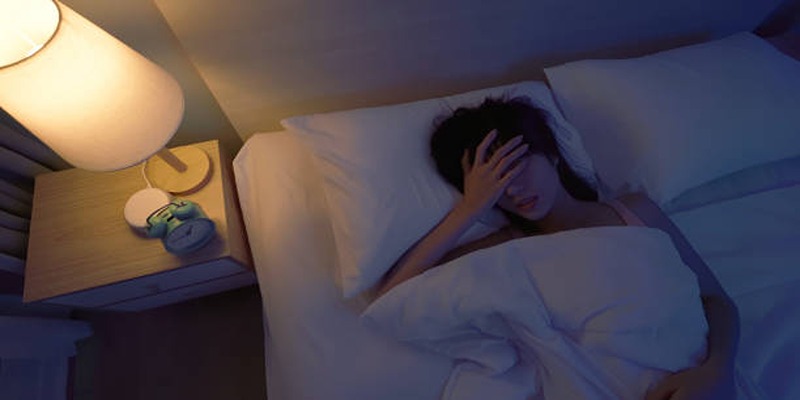False awakenings are strange experiences where you think you've woken up, but you're still dreaming. They can feel very real, making it hard to tell the difference between dreams and reality. For some people, this can be confusing or even unsettling. However, understanding how they happen and how to deal with them can make the experience less scary. This guide will help you recognize the signs of false awakenings and give tips on how to manage them. With practice, these dreams can become less overwhelming.
What are False Awakenings?

False awakenings occur when you dream that you have woken up, but in reality, you are still asleep. This can happen multiple times in one night or even several nights in a row. False awakenings can be realistic and vivid, making it hard to distinguish them from actual waking life. They often occur during lucid dreaming, where the dreamer is aware they are dreaming but unable to fully control their dreams. These experiences can feel confusing and disorienting, especially when you think you've truly woken up, only to find out it was all part of a dream.
Can False Awakenings Be Harmful?
While false awakenings can be startling or unsettling, they are not considered harmful. They are a natural part of the sleep cycle and do not pose any physical danger to the dreamer. However, for some individuals, repeated false awakenings may cause anxiety or stress. If this is the case, it's essential to address any underlying issues that may be causing these dreams.
Signs of False Awakenings
- Familiar environment: In most cases, you will find yourself in your own room or a familiar place when experiencing a false awakening. This can make it harder to realize that you are still dreaming.
- Routine activities: False awakenings often involve mundane, everyday tasks such as getting out of bed, brushing your teeth, or checking your phone. These routine activities might seem perfectly normal and convincing at first, but upon closer inspection, you may notice things are slightly different than usual.
- Unrealistic events: Sometimes, false awakenings can involve unlikely scenarios or impossible situations. For example, finding yourself in a completely different location or interacting with people who are no longer alive. These strange occurrences can be a sign that you are still dreaming.
- Multiple awakenings: As the name suggests, false awakenings can happen multiple times in one night. This repetition of seeming to wake up and then realizing you are still asleep is a key indicator of a false awakening.
Causes of False Awakenings
There isn't a definitive answer as to why false awakenings occur, but some factors that may contribute include:
- Sleep disturbances: False awakenings often happen during periods of disturbed sleep, such as when you are overtired or experiencing jet lag.
- Lucid dreaming: False awakenings commonly occur during lucid dreaming. When the dreamer is aware they are dreaming but unable to fully control their dreams, they may try to wake themselves up only to find out it was still part of the dream.
- Stress and anxiety: Stressful events in your waking life can also trigger false awakenings. The fear and uncertainty associated with these experiences can manifest in your dreams, causing you to question whether you are truly awake.
Managing and Reducing False Awakenings
While false awakenings can be unsettling, there are ways to manage and reduce their frequency:
1. Reality Checks
One of the best ways to distinguish a false awakening from reality is by performing reality checks. These are simple actions that you can do in both dreams and waking life, but they will yield different results. For example, try looking at a clock or reading some text in your dream and then again when you're awake. In a dream, the numbers and letters may appear distorted or change upon re-reading, while in real life, they will remain consistent.
2. Keep a Dream Journal
Keeping a dream journal can help you become more aware of your dreams and identify patterns or triggers for false awakenings. Writing down your experiences as soon as you wake up can also help you remember them more clearly and make it easier to distinguish between dreams and reality.
3. Practice Lucid Dreaming
As false awakenings often occur during lucid dreaming, practicing this technique can give you more control over your dreams. This way, when you realize you are still dreaming, you can intentionally change the dream's direction or choose to wake up.
Create a Relaxing Sleeping Environment

Reducing sleep disturbances may also help reduce the frequency of false awakenings. Creating a comfortable and relaxing sleeping environment can promote better sleep quality and decrease the likelihood of experiencing disturbed sleep. Consider using white noise or calming scents to help you relax and fall asleep more easily.
5. Address Underlying Stress and Anxiety
If false awakenings are causing significant stress or anxiety, it's essential to address any underlying issues that may be contributing to them. This could involve seeking therapy, practicing relaxation techniques, or making positive lifestyle changes.
When to Seek Professional Help
In most cases, false awakenings are a natural and harmless part of the sleep cycle. However, if they become frequent or cause significant distress, it's essential to seek professional help. A mental health professional can help you identify any underlying issues and develop coping strategies for managing these dreams. Remember, with practice and proper management techniques, false awakenings can become less overwhelming and more manageable over time.
Conclusion
False awakenings can be disorienting and scary experiences, but they are a common occurrence in the sleep cycle. By recognizing the signs and understanding their potential causes, you can learn to manage them effectively. With patience and practice, you can reduce the frequency of these dreams and make them less disruptive to your sleep. If you continue to experience frequent false awakenings, it's essential to seek guidance from a professional who can help you address any underlying factors contributing to these dreams.











